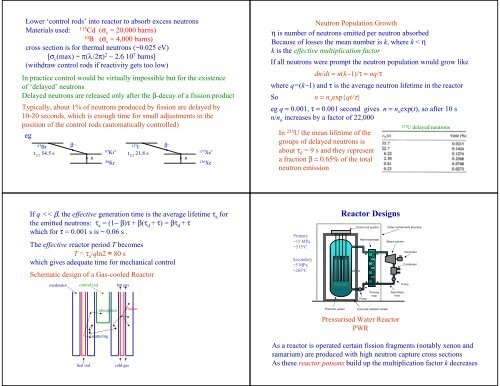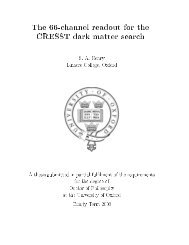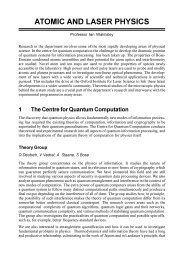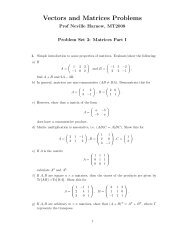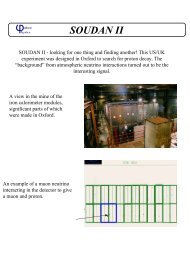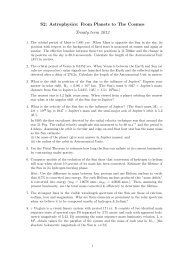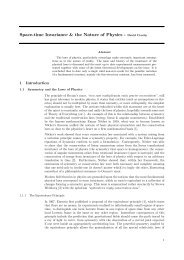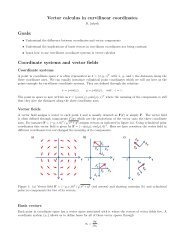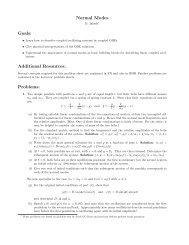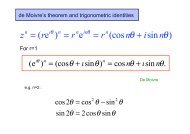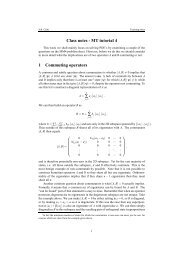You also want an ePaper? Increase the reach of your titles
YUMPU automatically turns print PDFs into web optimized ePapers that Google loves.
Lower ‘control rods’ into reactor to absorb excess neutrons<br />
Materials used: 113 Cd (σ c = 20,000 barns)<br />
10<br />
B (σ c = 4,000 barns)<br />
cross section is for thermal neutrons (~0.025 eV)<br />
[σ c (max) ~ π(λ/2π) 2 ∼ 2.6 10 7 barns]<br />
(withdraw control rods if reactivity gets too low)<br />
In practice control would be virtually impossible but for the existence<br />
<strong>of</strong> ‘delayed’ neutrons<br />
Delayed neutrons are released only after the β-decay <strong>of</strong> a fission product<br />
Typically, about 1% <strong>of</strong> neutrons produced by fission are delayed by<br />
10-20 seconds, which is enough time for small adjustments in the<br />
position <strong>of</strong> the control rods (automatically controlled)<br />
eg<br />
87<br />
Br β −<br />
t 1/2<br />
54.5 s<br />
n<br />
87<br />
Kr *<br />
86<br />
Kr<br />
137<br />
I β −<br />
t 1/2<br />
21.8 s<br />
n<br />
137<br />
Xe *<br />
136<br />
Xe<br />
Neutron Population Growth<br />
η is number <strong>of</strong> neutrons emitted per neutron absorbed<br />
Because <strong>of</strong> losses the mean number is k, where k < η<br />
k is the effective multiplication factor<br />
If all neutrons were prompt the neutron population would grow like<br />
dn/dt = n(k−1)/τ = nq/τ<br />
where q=(k−1) and τ is the average neutron lifetime in the reactor<br />
So<br />
n = n o exp{qt/τ}<br />
eg q = 0.001, τ = 0.001 second gives n = n o exp(t), so after 10 s<br />
n/n o increases by a factor <strong>of</strong> 22,000<br />
In 235 U the mean lifetime <strong>of</strong> the<br />
groups <strong>of</strong> delayed neutrons is<br />
about τ d = 9 s and they represent<br />
a fraction β = 0.65% <strong>of</strong> the total<br />
neutron emission<br />
235<br />
U delayed neutrons<br />
If q


